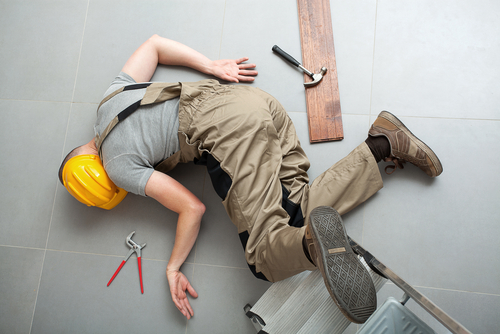By Ana Ellington, BLR Legal Editor
Most U.S. companies have fall protection plans. But does your company’s plan include a plan for after the fall—a rescue plan?

Many companies with excellent safety standards lack a solid plan for recovery once a worker has fallen. There should be more to it than calling 911.
Falls continue to be not only one of the most common workplace accidents but also the most frequently violated OSHA standard year after year. However, preventing falls is only part of the plan to keep your workers safe. The other important part is rescuing the worker after the fall to prevent additional injuries.
At a CONN-OSHA training session this spring, Michael Zisken from Field Safety Corporation spoke about the importance of preparing for the fall while on the ground. Zisken said the rescue plan is a critical element of fall protection. Why? Because workers are at risk of serious injury, even death, from falls when using fall arrest systems, even if there is no visible trauma. Prolonged suspension can cause orthostatic intolerance and suspension trauma—all that matters is that the legs are immobile and lower than the heart.
Under 29 CFR 1926.502 (d) (Fall protection systems criteria and practices), OSHA requires that employers provide for “prompt rescue of employees in the event of a fall or shall assure that employees are able to rescue themselves.” This should include identifying rescue procedures that address the potential for orthostatic intolerance and suspension trauma. Your rescue procedures also should address how the rescued worker will be handled to avoid any post-rescue injuries.
Great news! BLR’s renowned Safety.BLR.com® website now has even more time-saving features. Take our no-cost site tour! Or better yet, try it at no cost or obligation for a full 2 weeks.
While OSHA standards don’t specify a time rescues need to be carried out within, they have stated in a safety and health information bulletin (SHIB 03/24/2004—revised 2011) “research indicates that suspension in a fall arrest device can result in unconsciousness, followed by death, in less than 30 minutes.” The danger begins when someone is unable to move for as little as 5 minutes. The tolerance varies greatly from person to person, but the negative effects can set in quickly.
Rescue plans do not have to be complicated. In some situations, a ladder can do the job and the worker can self-rescue. Simple plans do work, but they need to be noted and practiced before an accident happens for them to be completed swiftly when an emergency does occur. Without training and practice, it may take coworkers an hour or more from the fall event to even initiate the rescue procedures themselves.
Rescue Plan
Here are some items to include in your rescue plan whenever fall arrest systems are used and when self-rescue is not possible:
- What is the emergency contact information of professional rescue services available, such as the local fire department, and what are the instructions for summoning immediate assistance?
- When using a third-party rescue service, let it know in advance that your work project involves potential fall hazards—give details.
- Is rescue equipment immediately available for this location? (Ladders, aerial devices, elevating work platforms, tripods, additional harnesses, controlled descent devices, winches, pulleys, etc.)
- What obstructions are in the way of reaching the suspended worker?
- How will rescue be assured within 15 minutes of the occurrence of a fall to minimize the risk of further injury or death due to suspension trauma?
- How will the safety of the rescuers be assured as well as that of the suspended worker?
- What communication systems will be used between the suspended worker and rescue team?
Your one-stop safety management resource, available 24/7. Go here to take a no-cost site tour or here to try it in your own office!
Other Procedures
Your fall prevention plan should include the following contingency-based actions:
If self-rescue is impossible, or if rescue cannot be performed promptly, the worker should be trained to “pump” his or her legs frequently to activate the muscles and reduce the risk of venous pooling. Footholds can be used to alleviate pressure, delay symptoms, and provide support for “muscle pumping.”
Continuous monitoring of the suspended worker for signs and symptoms of suspension trauma.
Ensuring the worker standard trauma resuscitation once rescued.
If the worker is unconscious, keeping the worker’s air passage open and obtaining first aid.
Monitoring the worker after the rescue and ensuring that the worker is evaluated by a healthcare professional.
While the ultimate goal of fall protection is to prevent a fall from occurring, the reality is that falls from height are a daily occurrence in U.S. workplaces. To be prepared for the eventuality of a fall means having a fall protection plan that includes provisions for prompt rescue.
Many employers feel intimidated by rescue procedures and shy away from them, but just like any other safety plan or policy, rescue can be addressed reliably and efficiently when tackled head on.
Rescue from heights is not only possible but necessary. You must prepare, train, and practice performing these types of rescues. Preplanning is the key ingredient to a safe and cost-efficient operation.

YES too many companies tend to rely on EMS to ‘rescue’ their fall victims, but that does not release them from having a plan. Sometimes the suspension trauma causes a worse injury than the original fall.